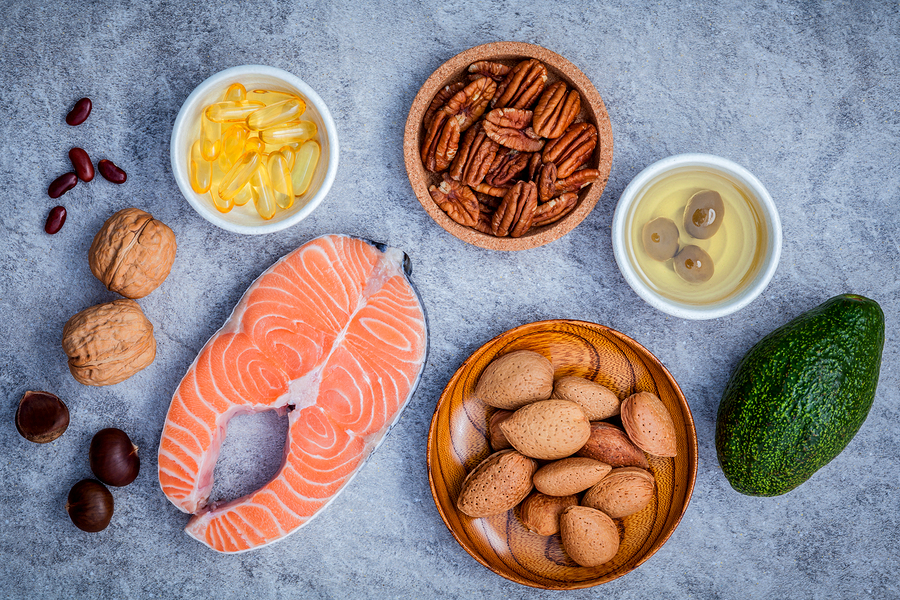Should we eat fat and, if so, what type of fat should we eat? How much should we eat? And how do we know which fats are in our food?
For many years the expert advice has been that limiting saturated fats in our diets was the healthy way to go, leading to a vast array of “fat free”, “light” or “low-fat” products on supermarket shelves, but some recent reports have questioned this, suggesting that not all saturated fats are equally bad for us and that some naturally produced high-quality foods, such as butter, milk and meat, don’t carry quite the same health risks. In fact, a few people seemed to suggest that they can be better for us than some other foods generally perceived as being healthier!
All of this is very confusing for ordinary folk like me, so I decided to read around the subject to try and work out, in very simple terms, about fats and diet. Here is a quick overview of what I found out:
Do we need fat in our diet?
Yes we do! Fat is an essential component in our diet, a rich source of energy and an important element in promoting good health if eaten in the right amounts. “Good” fats contribute to a healthy heart and brain and help the body to absorb essential vitamins, but “bad” fats can be detrimental to health, increasing the risk of developing diseases.
SEE ALSO: How to make your food look good
Types of fat
Transfats: these fats occur naturally in very small amounts in some foods, such as meat and dairy, but it is artificially produced trans fats that are agreed to be very unhealthy and best avoided. They are produced when vegetable oils are hydrogenated, turning them into solid fat and making products less likely to spoil. Trans fats are known to raise levels of LDL or “bad” cholesterol in the bloodstream, a worrying effect that could lead to heart disease, stroke and type 2 diabetes. Fortunately, many manufacturers are now changing their processes to remove trans fats from products such as fat spreads.
They may be found in margarine, fried foods, processed snack foods, commercially baked products and readymade mixes.
SEE ALSO: Common cooking mistakes
Unsaturated: unsaturated fats, the HDL or “good” fats, are known to be beneficial for your health, reducing the amount of “bad” cholesterol in the bloodstream and lowering the risk of heart disease.
They can be monosaturated, in foods such as olives, avocados and many nuts, or polyunsaturated, in foods such as sunflower, sesame and pumpkin seeds, flax, soymilk, tofu and walnuts.
Omega 3: Omega 3 fatty acid, a type of polyunsaturated fat, is particularly beneficial for health in many ways and should be a regular part of our diet.
It is found in some vegetables, such as brussel sprouts, kale and spinach, but mainly in oily fish including mackerel, salmon, trout, herring, anchovies, pilchards and fresh crab.
Saturated: most experts still support the view, based on extensive research, that foods with a high proportion of saturated fat are bad for our health, particularly when eaten to excess because they lead to high levels of “bad” cholesterol in the bloodstream and raise the risk of disease.
These foods include fatty meats, full-fat dairy products, some processed foods such as sausages, pies, biscuits and pastries, some oils such as palm and coconut oil, and solid fats like butter and lard.
SEE ALSO: Cooking glossary
So what can we do?
- Avoid eating foods containing trans fats. Try to avoid fried and fast foods, and read labels to check for hidden trans fats, often labelled as “hydrogenated” on the packaging.
- Limit the amount of saturated fat in your diet, especially avoiding that in processed foods, snacks and takeaways. When you do eat saturated fat, eat it in moderation and try to choose high quality naturally produced foods.
- Make changes wherever you can from saturated to unsaturated fats. For example, change from processed oils to others such as extra virgin olive oil made without the use of heat and chemicals.
- Eat 2 portions of fish a week, at least one of them being an oily fish with omega 3.
- Do beware of foods labelled “low fat”; read the labels carefully. It may be 30% lower in fat than the original very high-fat version, but could still be high in saturated fat! Also, look out for products where extra sugar has been added when the fat has been reduced.
- Do consider your fat intake as part of a balanced nutritious diet and a healthy lifestyle, thinking about other issues such as salt and sugar intake and levels of exercise
 About the Author
About the Author
Liz Robb was a primary teacher for many years, being an enthusiastic home cook, she always had an interest in food related topics.
Liz take a keen interest in art, enjoying life drawing, lectures in art appreciation and visits to museums and galleries. She love literature and the theatre, and belong to two book clubs. Aside from that, Liz enjoys walking in the beautiful countryside in the Peak District.



 About the Author
About the Author













